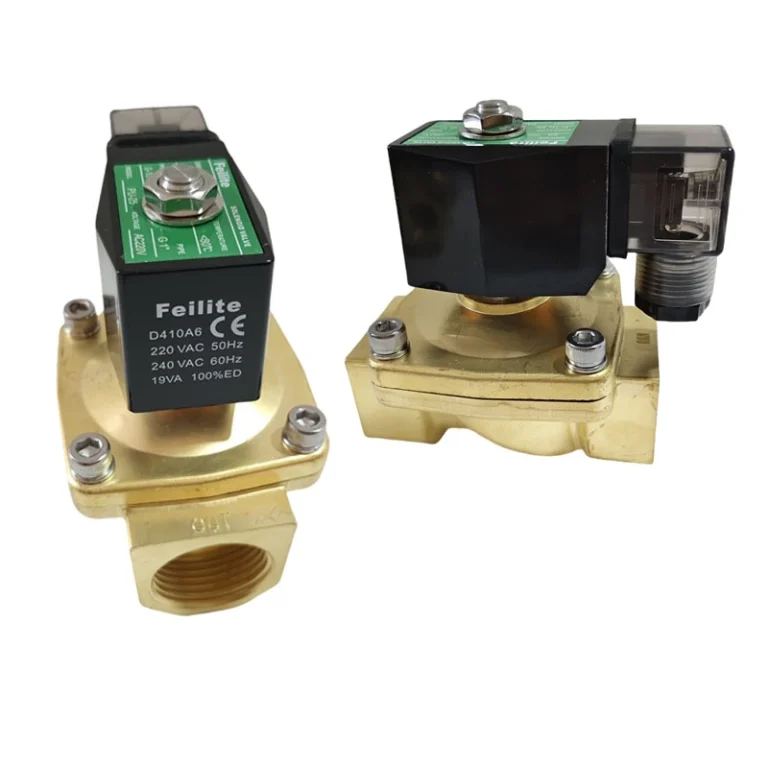BasideWT- Whole Home Water Filtration System & Replacement

FRP Water Tank Manufacturers | Custom FRP Vessels for Water Treatment
PRODUCT PARAMETERS
- Product Name: FRP Water Tank
- Material: Epoxy Resin, Glass Fiber
- Color: Nature/Blue/Black/Grey/Green
- Filter media: quartz sand, activated carbon, soft water resin
- Processing Type: Reverse Osmosis, filtration, Softening
- Core Components: Pressure vessel
- Performance: High efficiency filter
- Working Pressure: 100 psi and 150 psi
- Operating Temperature: 1-49°C(34-120°F)
- Type: Water Filtration
- Packing: Standard Exportation Package
What is an FRP Water Tank?
An FRP water tank is a storage vessel made from Fiber Reinforced Plastic. This material is a composite. It combines strong glass fibers with a durable polymer resin. Therefore, it creates a substance that is both incredibly strong and highly resistant to corrosion. Unlike steel or concrete, FRP does not rust or degrade easily. It is the modern solution for long-term storage needs.
FRP Water Tanks for Water Treatment Systems
Our composite tanks are built with a robust construction: a polyethylene core fully encapsulated in an epoxy-sealed fiberglass shell. This design delivers exceptional durability and superior chemical resistance.
Specifically engineered as universal media vessels, they are perfectly suited to house:
- Ion-exchange resin for water softening.
- Various backwashing filtration media, including catalytic carbon, activated carbon, and pH neutralizers.
Key Advantages of Choosing FRP Storage Tanks
- Superior Corrosion Resistance: FRP tanks excel in harsh environments. They withstand water, chemicals, and aggressive wastewater. This makes them last for decades.
- Remarkable Strength-to-Weight Ratio: These tanks are incredibly strong yet very lightweight.
- Long Service Life and Low Maintenance: Say goodbye to frequent painting and repairs. FRP is virtually maintenance-free. This feature provides significant cost savings over time.
- Hygienic and Non-Toxic: The smooth, non-porous inner surface prevents algae and bacteria growth. Consequently, it is perfect for storing potable drinking water.
- Design Flexibility: BasideWT FRP Water Tank Manufacturers can easily customize FRP vessels. They create specific sizes, shapes, and fittings for any project.
FRP Water Tank Performance Parameter
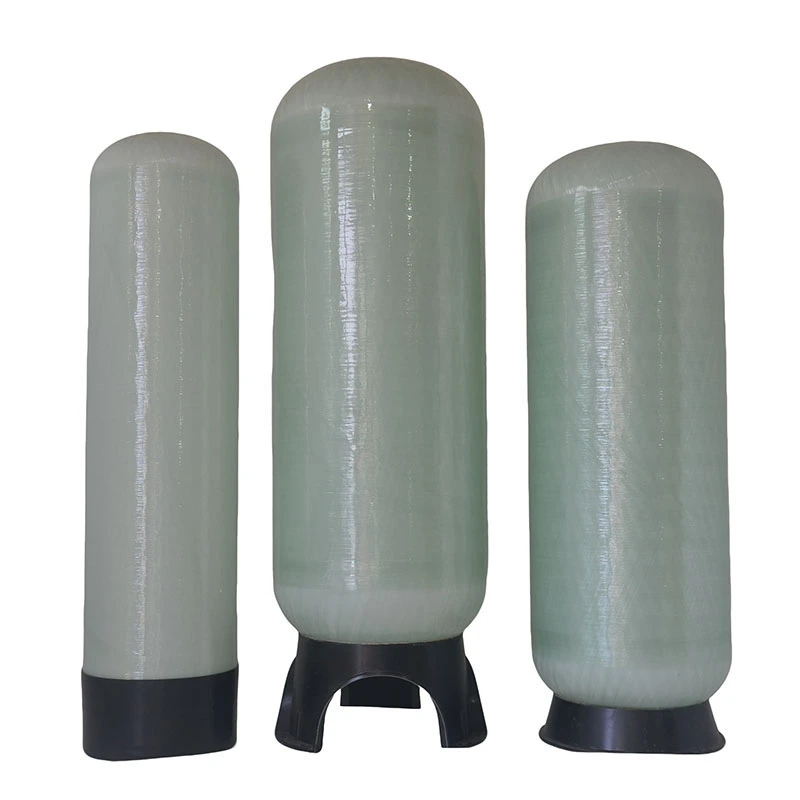
| Outer Winding | High performance resin with Fiber glass three-dimensional winding. |
| Liner material | Rotation molding or Blowing One-piece seamless PE inner liner. |
| Materials | FRP or reinforced PP |
| Opening | 2.5” and 4” reinforced plastic thread, 6” alloy flange. |
| Color | Different colors are available, natural color,black,deep blue, sky blue, gray, |
| Opening diameter | 2.5” – 6” |
| Capacity | 0.2—100T/H |
FRP Water Tank Size

817(0.2T/H)
Size:200*450mm

835(0.3T/H)
Size:200*890mm

844(0.5T/H)
Size:200*1100mm
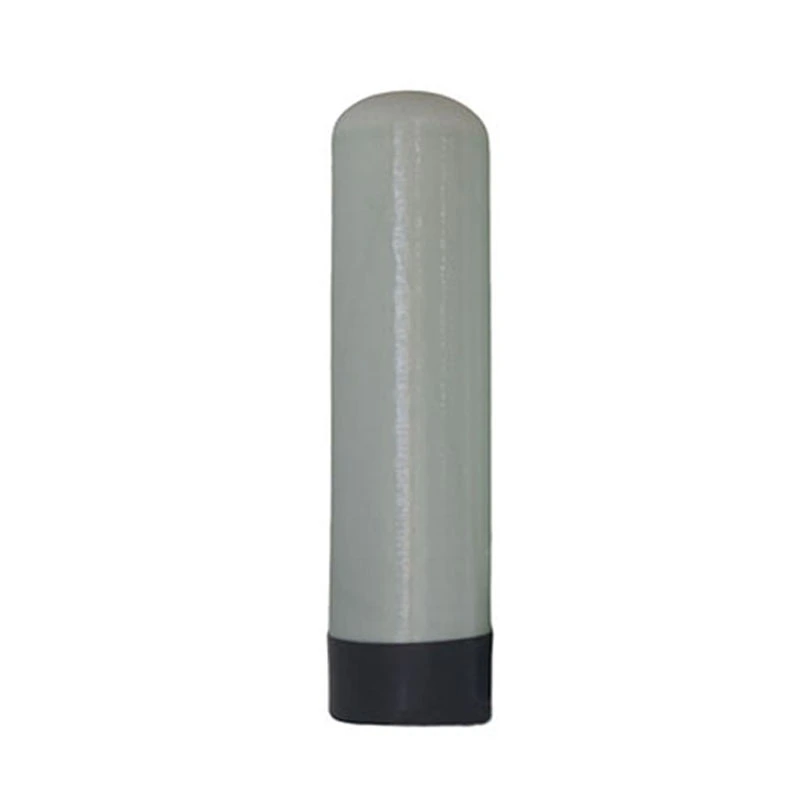
1054(1T/H)
Size:250*1400

1252(2T/H)
Size:300*1400mm

1265(2.5T/H)
Size:300*1650mm

1465(3-4T/H)
Size:350*1650mm

1665(4T/H)
Size:400*1650
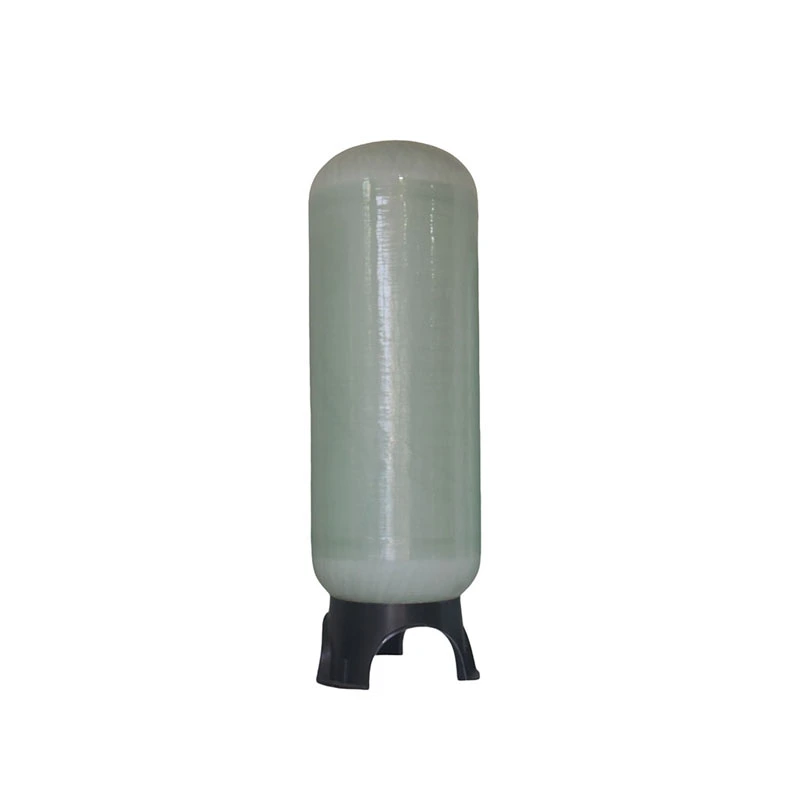
2069(5-6T/H)
Size:500*1750mm

2465(6-8T/H)
Size:600*1900mm

3065(10-12T/H)
Size:750*1900mm

3665(11-17T/H)
Size:900*1900

4065(18-20T/H)
Size:1000*1900mm
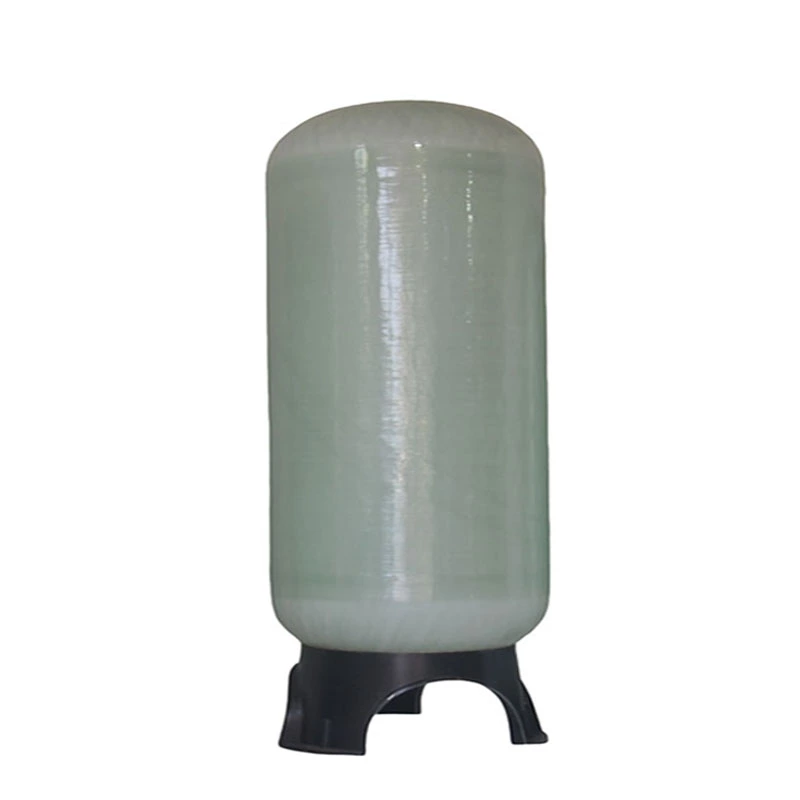
4079(20T/H)
Size:1000*2250mm
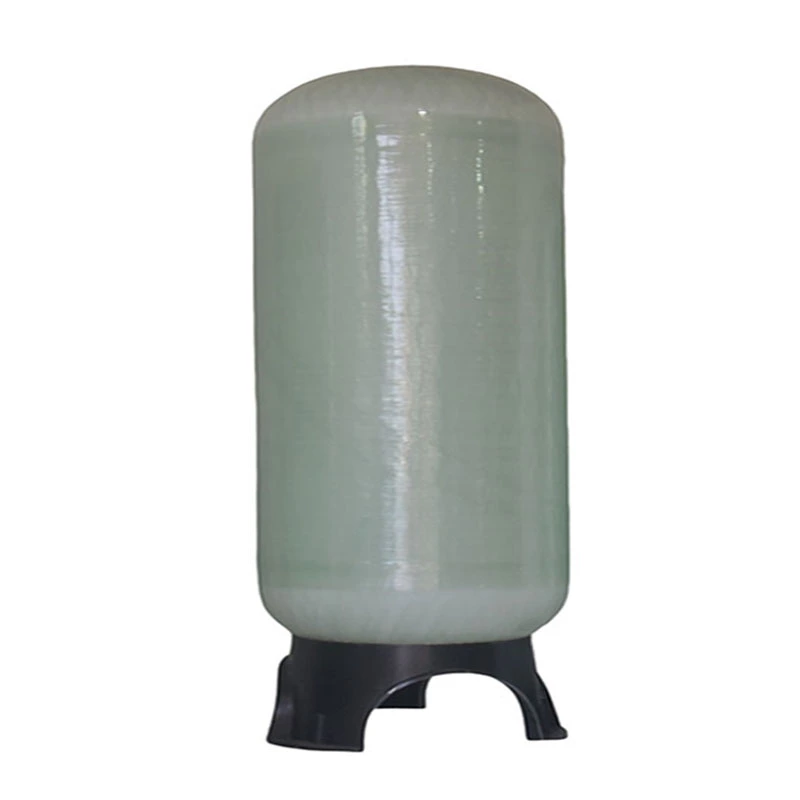
4872(20-30T/H)
Size:1200*2300mm
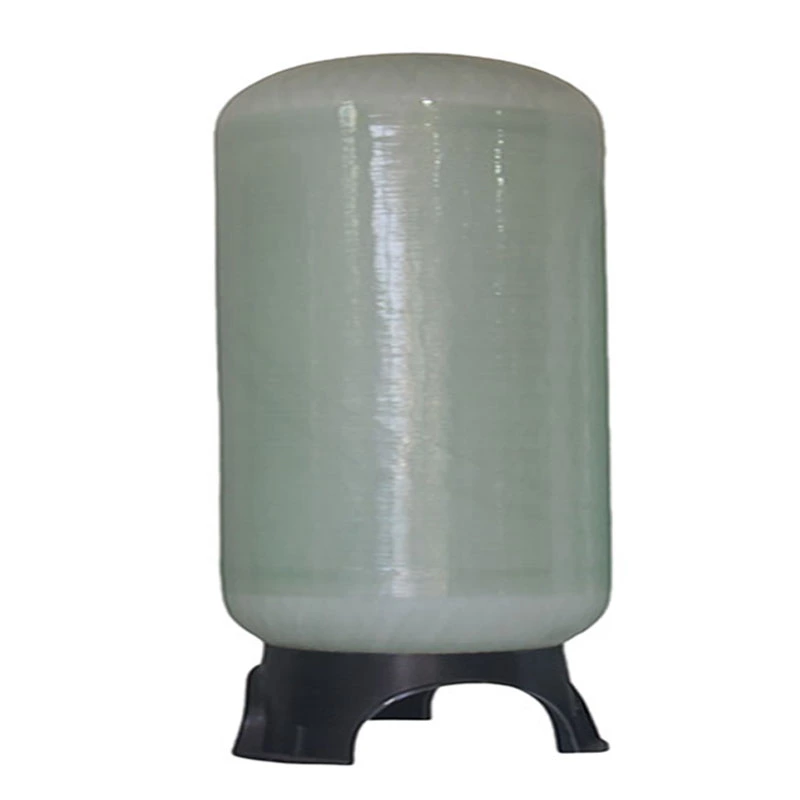
6079(35T/H)
Size:1500*2400
FAQs
Choosing the perfect water treatment system depends on your specific water quality, household size, and needs. We make it easy with our 3-step process:
Water quality testing – analyze your water for contaminants, hardness, and other factors.
Personalized Consultation – Our experts recommend systems based on your results, budget, and water usage.
Customized Solution – From whole-house filtration to targeted solutions (e.g., RO for drinking water, softeners for hard water), we tailor the system to your home.
To determine your water flow rate in gallons per minute (GPM), follow these simple steps:
Prepare for Testing:
- Prepare for Testing:
- Ensure all water fixtures in your home are turned off
- Select the faucet closest to your main water supply line (usually the kitchen sink or an outdoor spigot)
- Conduct the Test:
- Fully open the selected faucet
- Time how many seconds it takes to fill a 1-gallon container
- Repeat the test 2-3 times for accuracy
- Calculate Your Flow Rate:
Use this formula: Flow Rate (GPM) = 60 ÷ Fill Time (seconds)Example Calculation:- If your 1-gallon container fills in 15 seconds
- 60 ÷ 15 = 4 GPM
For more precise measurements or whole-home flow rate analysis, contact our water system specialists. We can help you determine if your current flow rate meets the requirements for any water treatment systems you’re considering.

1. Check Multiple Fixtures
Test water pressure at different faucets, showers, and appliances (e.g., kitchen sink, bathroom sink, outdoor hose).
If only one fixture has low pressure, the problem is likely localized (clogged aerator, faulty valve, or pipe issue).
If all fixtures have low pressure, the issue is systemic (main supply, pressure regulator, or water heater).
2. Inspect the Aerator or Showerhead
Unscrew the faucet aerator or showerhead and check for mineral deposits, debris, or rust.
Soak it in vinegar overnight to dissolve buildup, then rinse and reattach.
3. Check the Main Shutoff Valve
Locate the main water shutoff valve (usually near the water meter or where the main line enters the house).
Ensure it’s fully open (turn clockwise to close, counterclockwise to open).
1. Activated Carbon Filters
- Removes:
✅ Chlorine & chloramines
✅ Bad tastes & odors (e.g., sulfur)
✅ Volatile Organic Compounds (VOCs)
✅ Some pesticides & herbicides
❌ Does not remove heavy metals, dissolved minerals, or microbes
2. Reverse Osmosis (RO) Systems
- Removes:
✅ Heavy metals (lead, arsenic, mercury, cadmium)
✅ Dissolved salts (fluoride, nitrates, sulfates)
✅ Microplastics & sediment
✅ Bacteria & viruses (if combined with UV)
✅ Chlorine & chemicals (with carbon pre-filter)
❌ May remove beneficial minerals (can be remineralized)
3. Water Softeners (Ion Exchange)
- Targets:
✅ Calcium & magnesium (hardness)
✅ Low levels of iron & manganese
❌ Does not remove bacteria, chlorine, or heavy metals
4. UV Purifiers
- Kills:
✅ Bacteria (E. coli, coliform)
✅ Viruses (rotavirus, hepatitis)
✅ Protozoa (Giardia, Cryptosporidium)
❌ Does not remove chemicals, metals, or sediment
5. Sediment Filters
- Removes:
✅ Sand, rust, dirt
✅ Large particles & silt
❌ Does not remove dissolved contaminants
6. Whole-House Filtration Systems
Combines multiple methods (carbon + sediment + UV) for broad protection.
- UV: Kills bacteria/viruses but doesn’t remove chemicals or particles.
- RO (Reverse Osmosis): Removes 95–99% of contaminants (heavy metals, dissolved salts) but requires electricity.
- Activated Carbon: Absorbs chlorine, odors, and organic compounds—ideal for pre-filtration.
REQUEST A QUOTE
RELATED PRODUCTS
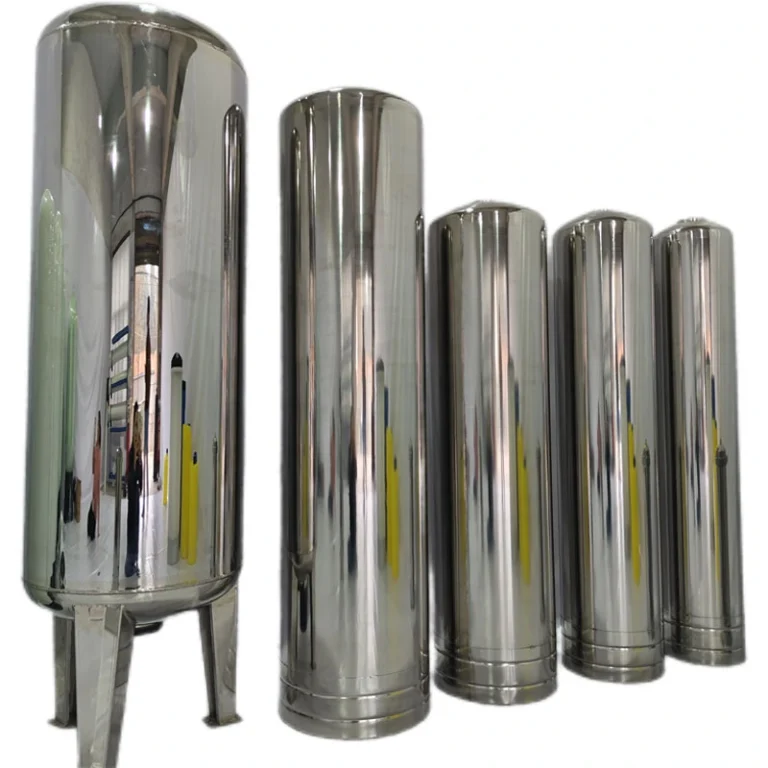
Food-Grade Stainless Steel Water Tank – 500L & 1000L Hygienic Filter Pressure Tank for Pure Storage

FRP Water Tank 1465 frp Vessel Price | BasideWT
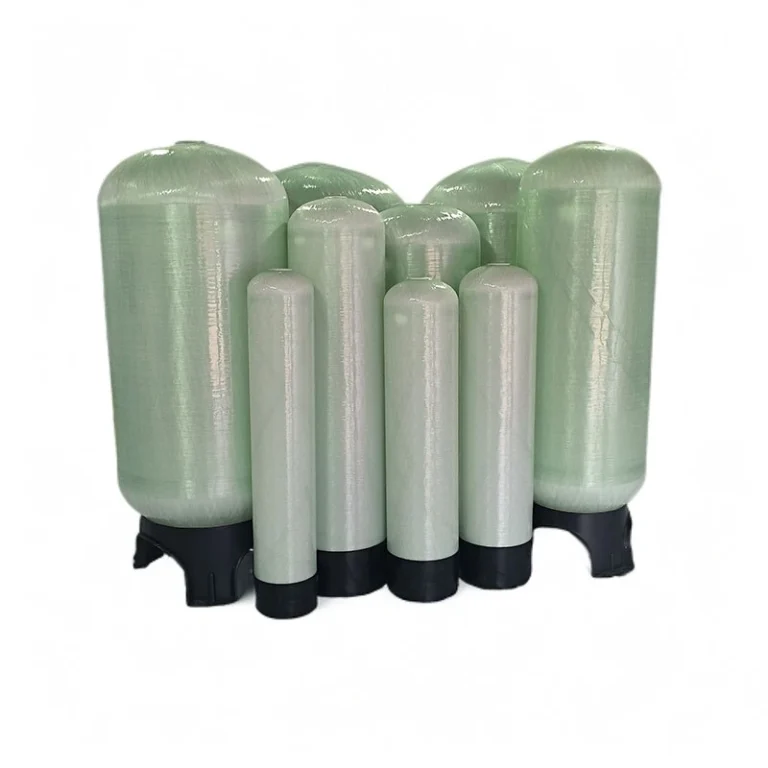
Custom FRP Water Treatment Tanks – Sand Filter & Hard Water Softener Pressure Vessels for Reverse Osmosis
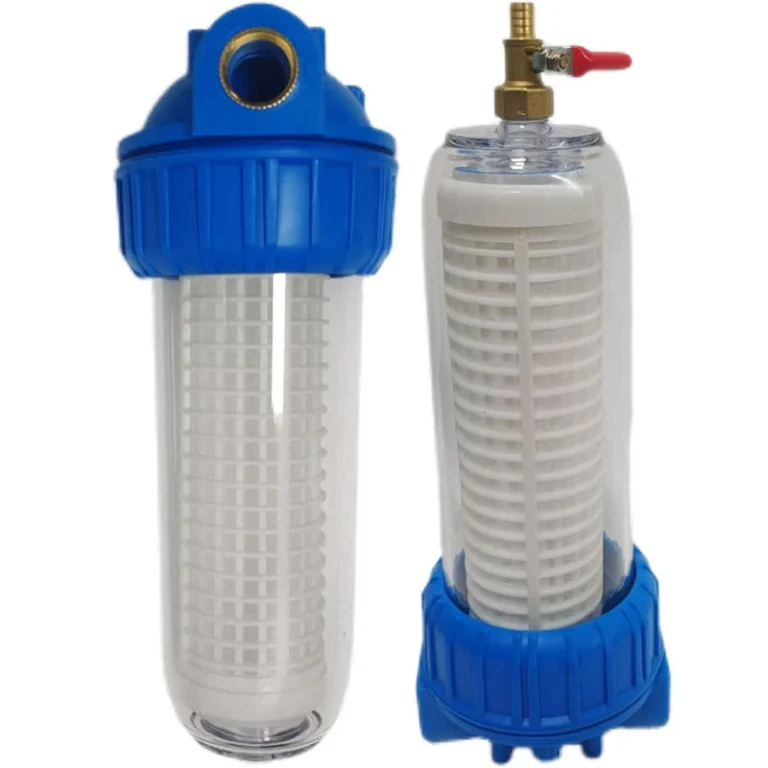
10-inch Transparent Backflushing Water Purifier Livestock Waterline Filter Housing High Pressure Washer Filter with Sewage Outlet

Automatic Water Pump Switch Pressure Switches Control Automatico Interruptor for Water Pumps and RO Systems
